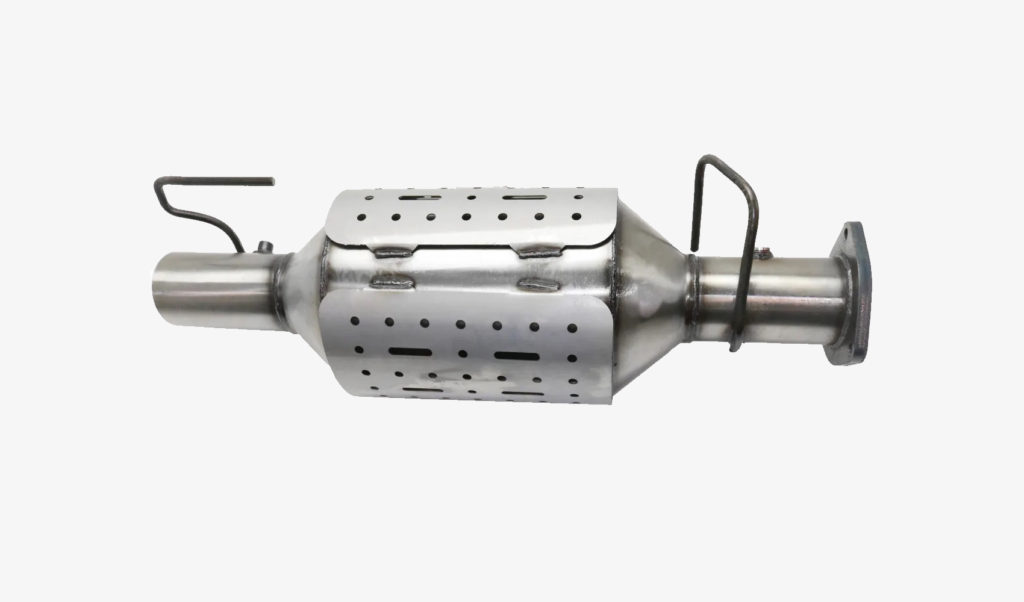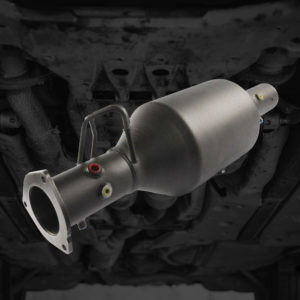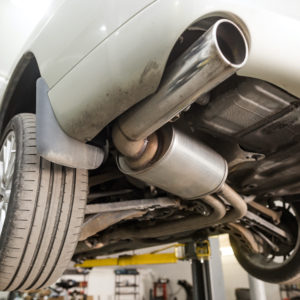The diesel particulate filter (DPF) plays a vital role in controlling the emission level of diesel vehicles. It removes 90% of the soot from the exhaust gasses produced by a diesel engine. The powertrain control module (PCM) will set a P2459 code if the diesel particulate filter fails to complete its regeneration cycle.
What Does the P2459 Code Mean?
Diagnostic trouble code (DTC) P2459 stands for “Diesel Particulate Filter Regeneration Frequency.” It applies to diesel-engined vehicles.
There are two types of diesel particulate filter systems: active and passive. An active DPF system takes its input directly from the PCM and runs automatically while driving.

In contrast, a passive system requires human input. The PCM will turn on a warning light to inform the driver to activate the passive regeneration process. The vehicle must be parked for most of the process, which can last for several hours, depending on the amount of soot collected by the diesel particulate filter.
The PCM regularly checks the diesel particulate filter for the exhaust pressure and regeneration process.
It will set the generic powertrain code P2459 if it detects one of two things: either the exhaust pressure didn’t hit the right level or the passive regeneration process didn’t follow the programmed frequency.
Note: The definition of code P2459 can differ according to the vehicle manufacturer. Check the appropriate repair manual or repair database for the exact code definition.
What are the Common Causes of a Code P2459?
- Bad DPF pressure sensor
- Restricted DPF or exhaust system
- An engine performance problem leading to excessive soot accumulation
- A circuit problem, such as a damaged wire or poor connection
- An issue with the PCM

What are the Common Symptoms of a Code P2459?
- Illuminated warning lights
- Vehicle stuck in a derated or “limp” mode
- Poor acceleration and other engine performance problems
How to Diagnose the P2459 Code
Since the P2495 code is a generic trouble code, it can show up in various diesel vehicles. There is no universal solution to it as its underlying problem and symptoms can vary per case.
If you’re not confident in your ability to determine what’s causing this code, you should take your vehicle to an auto repair shop for a proper diagnosis. Otherwise, you can go ahead and check the issue yourself. To help you get started, here is a video that can give you an idea of what the process might involve:
How to Fix the P2459 Code
It can be hard to resolve a P2459 code without the tools and know-how to test the diesel particulate filter. In most cases, it’s best to find a professional to repair or replace the faulty part for you.
Got the advanced technical knowledge and practical experience to personally test and replace the diesel particulate filter? Consult a vehicle-specific repair manual or online repair database to ensure you’re following the right steps to resolve this code.
Any information provided on this Website is for informational purposes only and is not intended to replace consultation with a professional mechanic. The accuracy and timeliness of the information may change from the time of publication.















